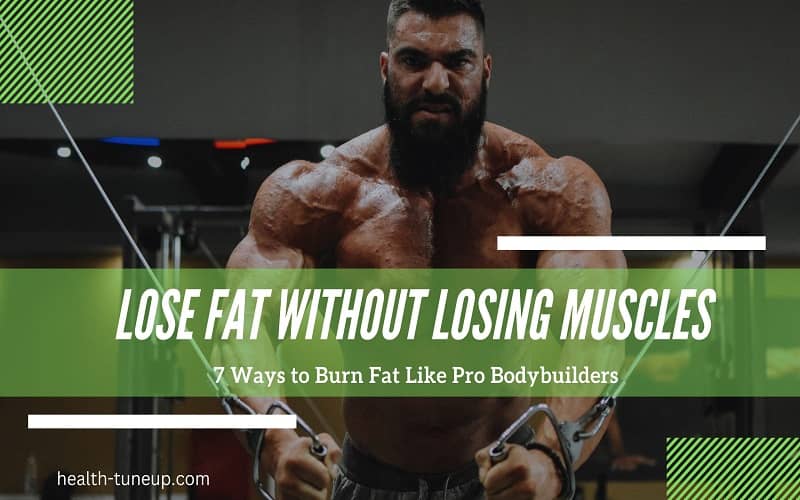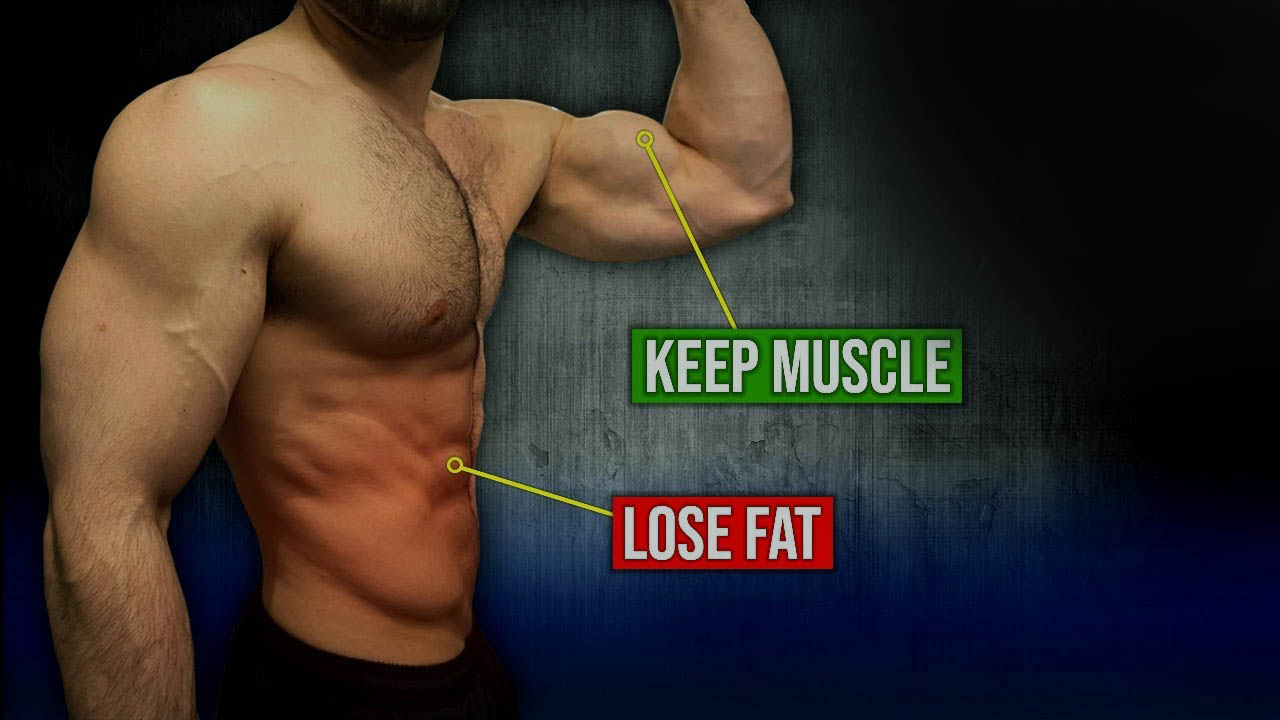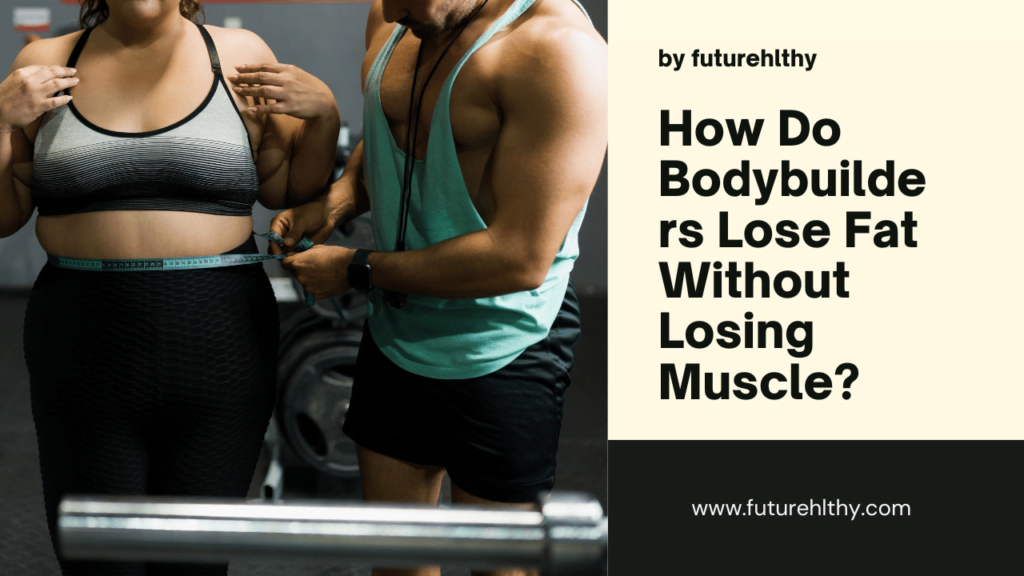How Do Bodybuilders Lose Fat Without Losing Muscle

The quest to shed body fat while preserving hard-earned muscle mass is a perpetual challenge for bodybuilders. It's a delicate balancing act involving precise nutritional strategies and carefully planned training regimens.
This article delves into the science and practical application of these methods, providing insights into how bodybuilders navigate this crucial phase of their training.
The Science Behind Fat Loss and Muscle Preservation
The fundamental principle is creating a calorie deficit: consuming fewer calories than the body expends. However, the magnitude and method of creating this deficit are critical.
A steep, aggressive cut can trigger the body to break down muscle tissue for energy, a process known as catabolism. Therefore, bodybuilders opt for a more gradual and controlled approach.
Nutritional Strategies
Protein intake is paramount. Consuming a high-protein diet, often exceeding 1 gram per pound of bodyweight, helps maintain muscle mass during periods of calorie restriction. This is because protein provides the amino acids needed to repair and rebuild muscle tissue.
Carbohydrate cycling is another common tactic. It involves strategically adjusting carbohydrate intake based on activity levels. Higher carb days coincide with intense training sessions to fuel workouts and replenish glycogen stores.
Lower carb days occur on rest days to promote fat burning. Healthy fats, such as those found in avocados, nuts, and olive oil, are also crucial. These fats support hormone production and provide a sustained energy source.
"The key is to find a sustainable balance," explains certified nutritionist, Sarah Miller. "Crash dieting is never the answer. It’s about making smart food choices and understanding how your body responds to different macronutrient ratios."
Training Protocols
Strength training remains the cornerstone of a bodybuilder's routine even during a cutting phase. Lifting heavy weights signals to the body that muscle mass is necessary and should be preserved.
Adjustments might be made to volume and intensity. Some bodybuilders reduce volume to manage fatigue while maintaining intensity to stimulate muscle growth. Others might incorporate higher rep ranges with slightly lighter weights.
Cardiovascular exercise is often incorporated to increase calorie expenditure. High-Intensity Interval Training (HIIT) is a popular choice due to its efficiency in burning calories in a short amount of time. Lower intensity steady state cardio is also used.
The Role of Hormones
Hormones play a significant role in both fat loss and muscle preservation. Maintaining a healthy hormonal profile is essential.
Cortisol, a stress hormone, can contribute to muscle breakdown. Therefore, managing stress through adequate sleep, proper nutrition, and stress-reduction techniques is crucial.
Hormones like testosterone and growth hormone are vital for muscle growth and fat loss. Optimizing these hormones through proper diet, training, and sleep can significantly impact results.
Supplementation
Supplements can play a supportive role, but they are not a substitute for a solid diet and training program. Protein powders are a convenient way to meet protein requirements.
Creatine can help maintain strength and muscle volume. Branch-chain amino acids (BCAAs) may aid in muscle recovery and reduce muscle soreness.
Fat burners, often containing ingredients like caffeine and green tea extract, can increase metabolism and promote fat loss, but their effectiveness varies greatly.
Real-World Applications
Many bodybuilders document their cutting phases and share their experiences online. This provides valuable insights into different approaches and strategies.
The experience of professional bodybuilder, John Davis, illustrates this process. "My cutting phase is all about precision. I meticulously track my macros and adjust my cardio based on my progress," Davis explains. "Consistency is key."
However, it's important to remember that what works for one person may not work for another. Experimentation and self-monitoring are essential.
Potential Pitfalls
Overdoing cardio can lead to excessive calorie expenditure and muscle loss. It’s crucial to find a balance that promotes fat loss without compromising muscle mass.
Underestimating calorie intake is another common mistake. Accurate tracking of food intake is essential to maintain a controlled calorie deficit.
Ignoring sleep and stress management can hinder progress and negatively impact hormone levels. Prioritizing these aspects is crucial for optimal results.
Conclusion
Losing fat without losing muscle is a challenging but achievable goal for bodybuilders. A combination of strategic nutrition, precise training, and attention to hormonal balance is essential.
By understanding the science behind these processes and implementing a personalized approach, bodybuilders can successfully navigate the cutting phase and achieve their desired physique.
The key takeaway is that a slow, controlled, and sustainable approach is far more effective than drastic measures.


















